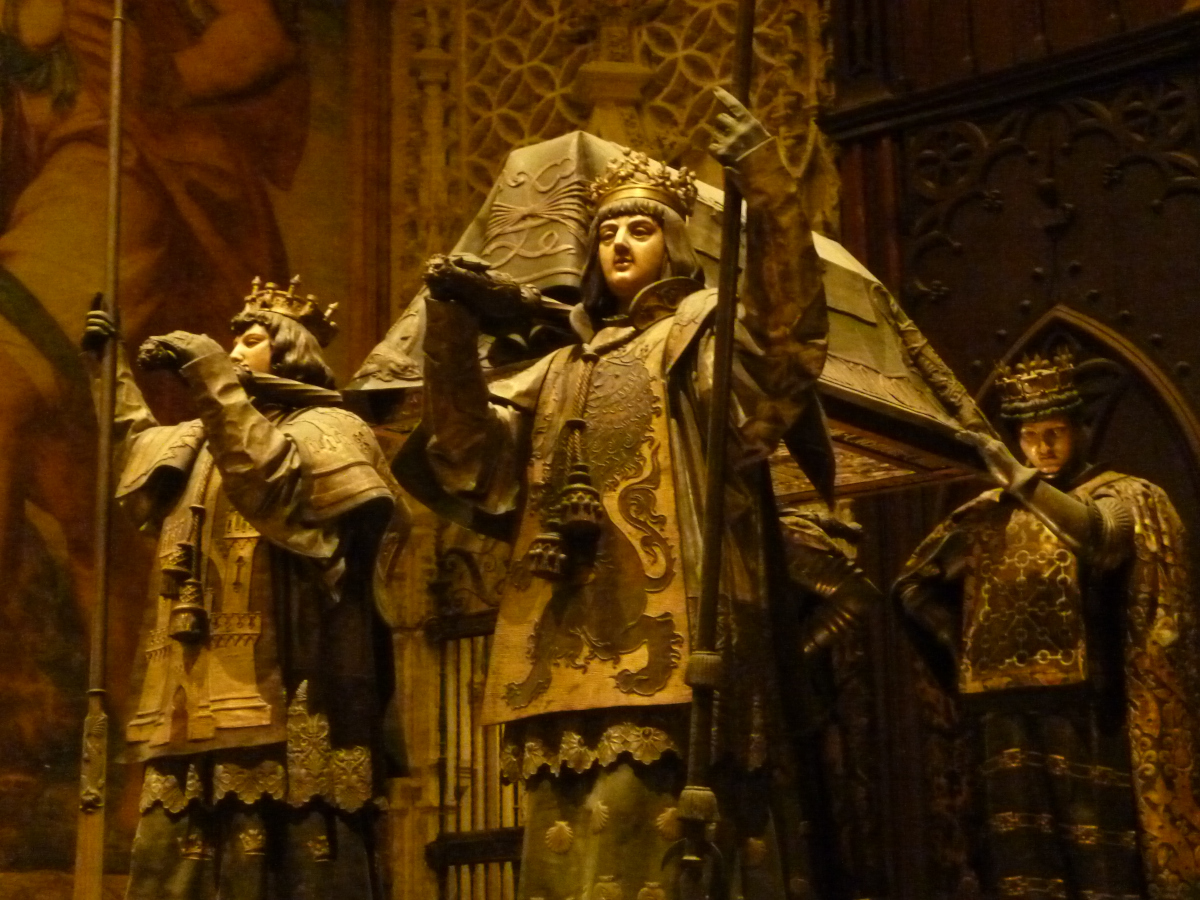Last Updated on September 3, 2023 by Ctybr67k
Sailing from Seville to discover the New World
This post tells the story of the Golden Age of Seville, when explorers like Christopher Columbus and Ferdinand Magellan left the city to discover the New World or to sail right around the globe. The writer Laurie Lee, visiting Seville in the 20th century, looked out over the river Guadalquivir and wrote that these ‘banks of a slow river, fifty miles from the sea, (were) once the greatest harbour in the world.’ In the 15th and 16th centuries that was true. We tell stories from that key era and then give details of three places you can visit today which help tell the story of this remarkable period. There’s much more detail on everything on the podcast.
seville, a port city
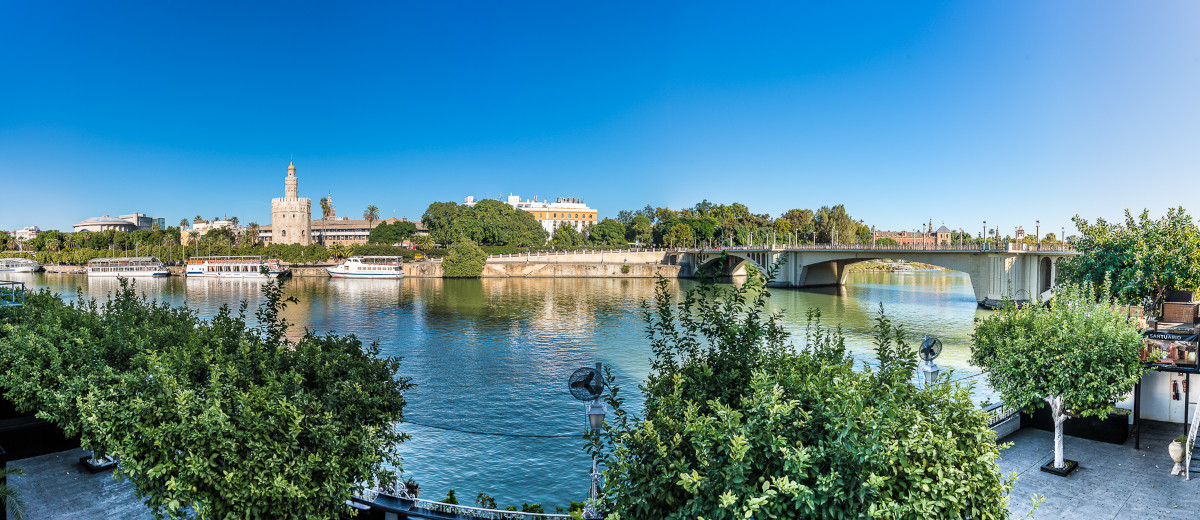
Towards the end of the 15th century, the first monarchs of Spain, Ferdinand and Isabella, used Seville as a base from which to enhance the country’s reputation and wealth. They funded explorers like Christopher Columbus to go and claim new lands for Spain, taking for themselves a ‘quinta real’, that is a ‘royal fifth’ share of all he brought back as their own. Wealth poured into the city as scores of ships returned every autumn laden with pearls, timber, medicinal plants, spices, sugar and, most lucrative of all, precious metals. Between 1503 and 1660, 16 million kilos of silver arrived in Europe, and vast quantities of gold.
Seville became a boom town, its population more than doubling as people flocked to share in the untold riches pouring in. Huge sums were spent on building palaces and cathedrals and this golden era lasted into the 18th century. A traveller, Henry Swinburne, visited Seville in the 1770s and found the court ‘the most splendid in Europe.’ He saw it bustling with trade, but also noted how much money was being wasted. ‘Great were the buildings begun’, he wrote ‘and still vaster the projects for false ones.’ And indeed, the boom years were ending, as those sailing ever bigger ships began to realise that the port of Cadiz, not 50 miles inland as Seville was, was much more suitable.
the slavery connection
Columbus returned to Seville laden with gold in 1493. Also on board his ship were 5 Caribbean Indians. After two more voyages, he’d imported 1200 people to sell as slaves in Seville. He has long been seen as a hero in Seville which, for example, celebrated the 500th anniversary of his landing in America with Expo 92. But, today, emphasis is also put on this dark side. A priest from Seville who travelled on one of his ships, Father Bartolomé de las Casas, wrote in disgust of how the native peoples – ‘these gentle, peaceful people’ – suffered ‘the most inhuman cruelties that have ever been committed by cruel and barbaric man and for no other reason than insatiable greed.’
maritime history at the torre del oro

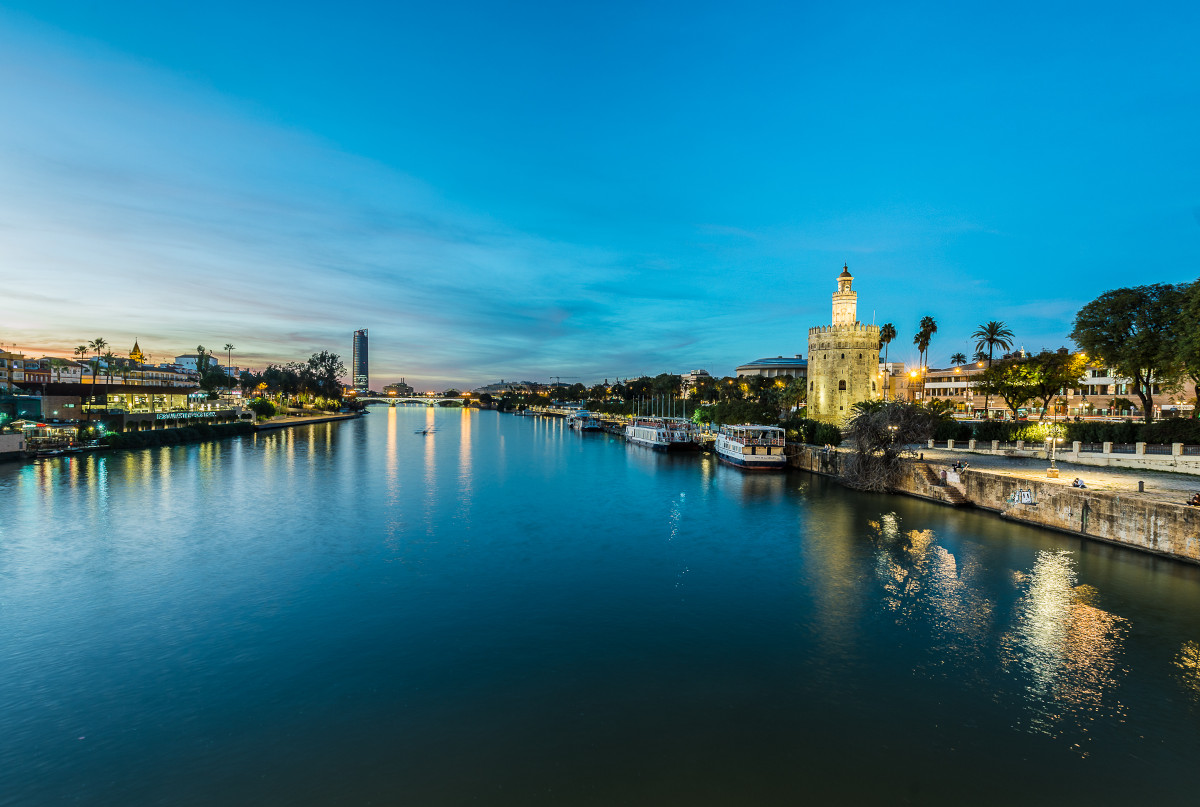
This tower – the ‘Golden Tower’ in English – was built by the Moors as part of the city’s defences. Originally, a matching tower stood on the opposite bank of the river, so a chain could be stretched between the two, preventing ships from entering the city. Over the centuries it’s been a landmark for sailors, and variously an ammunition store, treasure house and debtors’ prison. In the 14th century, Pedro I imprisoned his wife here. His story was that she ‘resisted his carnal demands’, hers, that he expected fidelity to be one way only. Today, it is a maritime museum, full of nautical charts and instruments, many of which illustrate the city’s history as the home port of famous explorers.
the admiral’s quarter at the alcazar

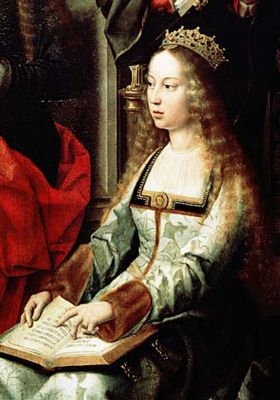
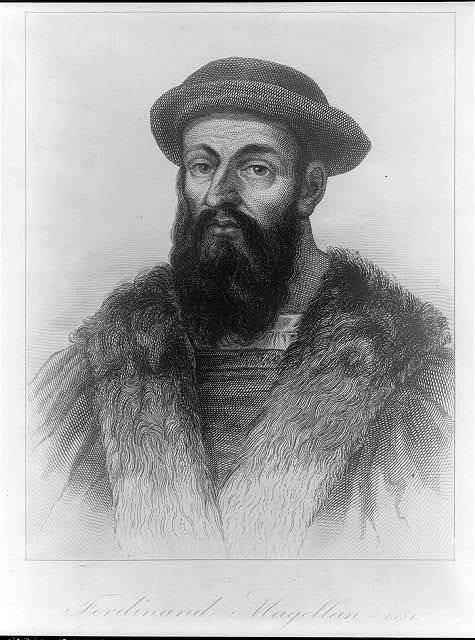
It was here that Queen Isabella would receive the explorers she financed. Christopher Columbus came to report on his discovery of America, Ferdinand Magellan to show her his plans for what turned out to be the first complete voyage around the globe. Later, in 1534, the Consulado de Comercio was set up here, to be the hub of the shipping trade, where sailors came to be approved for registration before joining a ship. Today, you can see the coats of arms of Columbus and others, as well as the chapel, with its Virgin of the Navigator altarpiece showing Mary blessing Columbus and other sailors before their perilous journey.
the archivo de indias
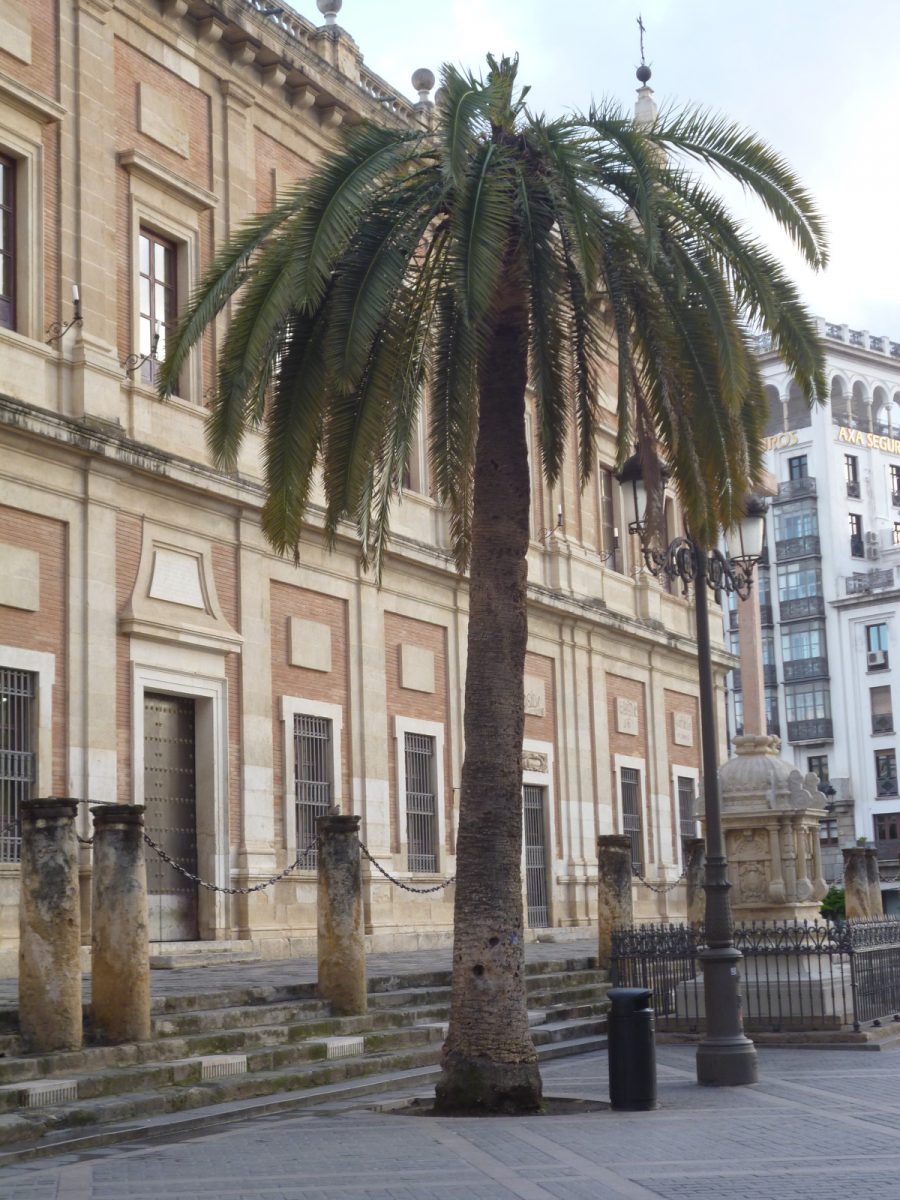
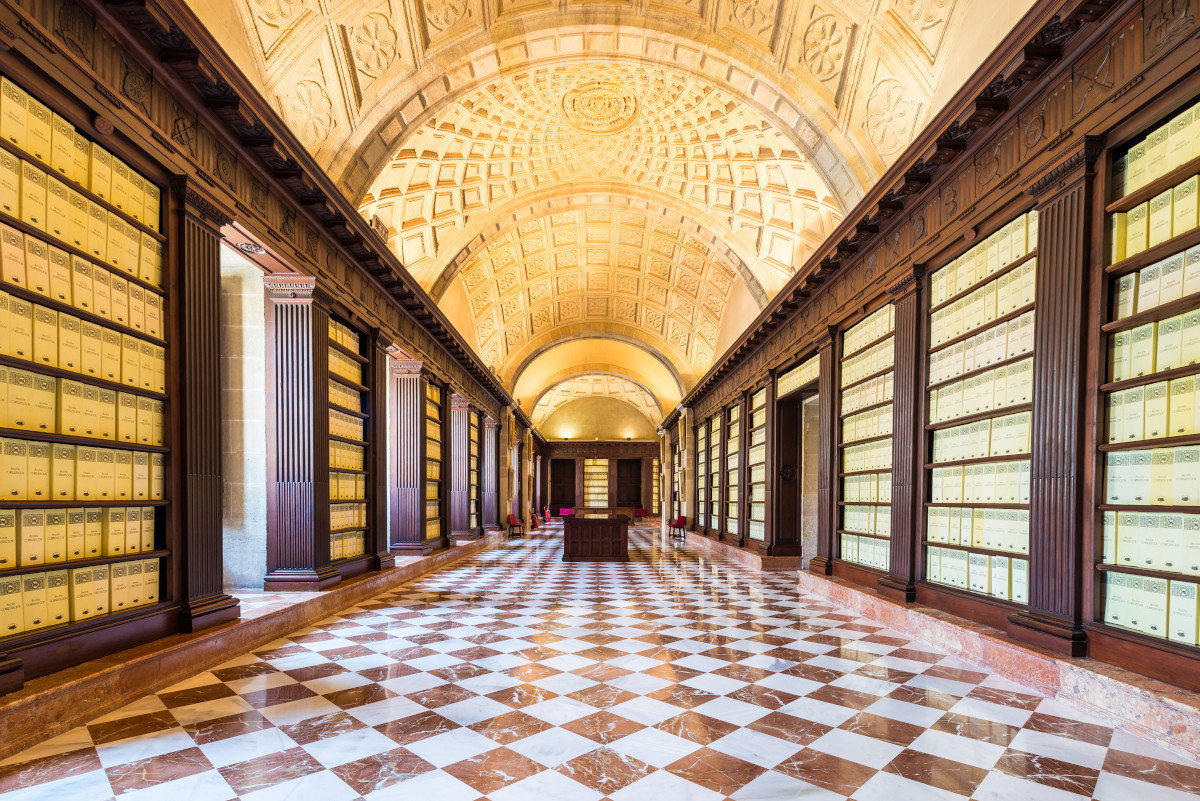
The original use for this impressive building just opposite the cathedral, was as a Casa de Contratacion, or trading house. It was built in 1594 so that traders who until then had stood outside the cathedral yelling out their offers had somewhere else to go. This history is remembered in the chains set up around the cathedral to keep them out – still there today – and in a relief on the cathedral wall of, (perhaps you can guess?) Jesus evicting merchants from the temple!
Today, it’s the main archive of Spain’s former empire: over 80 million documents, some dating from as early as 1492, including letters from Columbus himself and 8000 maps. Somewhere on the 9 km of shelving is everything you could possibly want to see relating to Spanish colonialism. Obviously, that’s totally overwhelming. Hold on to two facts: the building itself, with its grand pink and black marble staircase and acres of polished dark wooden shelving is itself an impressive statement of the power Spain once wielded; and the temporary exhibits are informative and much less daunting. One, for instance, showed all the foodstuffs first brought to Spain by the original explorers to America, including coconuts, spices, tomatoes, potatoes and chocolate.
Listen to the POdcast
Reading suggestions
Christopher Columbus (published by United Library)
The Four Voyages of Christopher Columbus (His Logbook and Letters)
links for this post
The Torre del Oro
The Alcazar
The Archivo de Indias
Previous Episode The Cathedral, the Giralda and Santa Cruz
Next Episode The Semana Santa and the Feria de April

